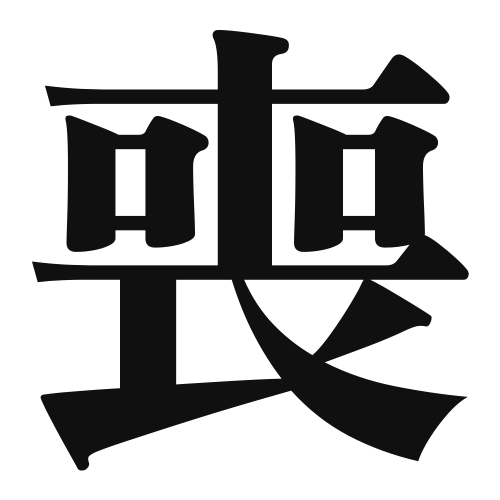1. Overview of Meaning
The kanji “喪” (mo) primarily means “loss” or “mourning.” It is often associated with the feelings and rituals surrounding the death of a loved one, symbolizing the state of being bereaved.
2. Formation and Radical
Formation of the Kanji: The kanji “喪” is a compound character (会意文字) that combines the elements of “to lose” and “mouth,” suggesting the expression of grief or sorrow through speech.
Radical: The radical for “喪” is “口” (kuchi), which means “mouth.” This radical often relates to speech or communication, reinforcing the idea of expressing loss.
3. Examples of Usage
Common Words and Phrases:
- 喪失 (sōshitsu) – loss
- 喪中 (mōchū) – mourning period
Example Sentences in Daily Conversation:
- 彼は最近、家族を喪失しました。 (Kare wa saikin, kazoku o sōshitsu shimashita.) – He recently experienced a loss in his family.
- 喪中のため、年賀状は出しません。 (Mōchū no tame, nengajō wa dashimasen.) – I won’t send New Year’s cards because I am in mourning.
4. Synonyms and Antonyms
Similar Kanji:
- 失 (shitsu) – loss, but more general and can refer to losing anything, not just in the context of death.
Antonyms:
- 得 (toku) – gain, which represents the opposite of loss.
5. Cultural and Historical Background
Relation to Japanese Culture: In Japan, “喪” is deeply connected to the customs surrounding death and mourning. It reflects the cultural significance of honoring the deceased and the importance of expressing grief.
Proverbs and Idioms:
- 喪に服す (mo ni fukusu) – to wear mourning clothes, indicating a period of mourning.
